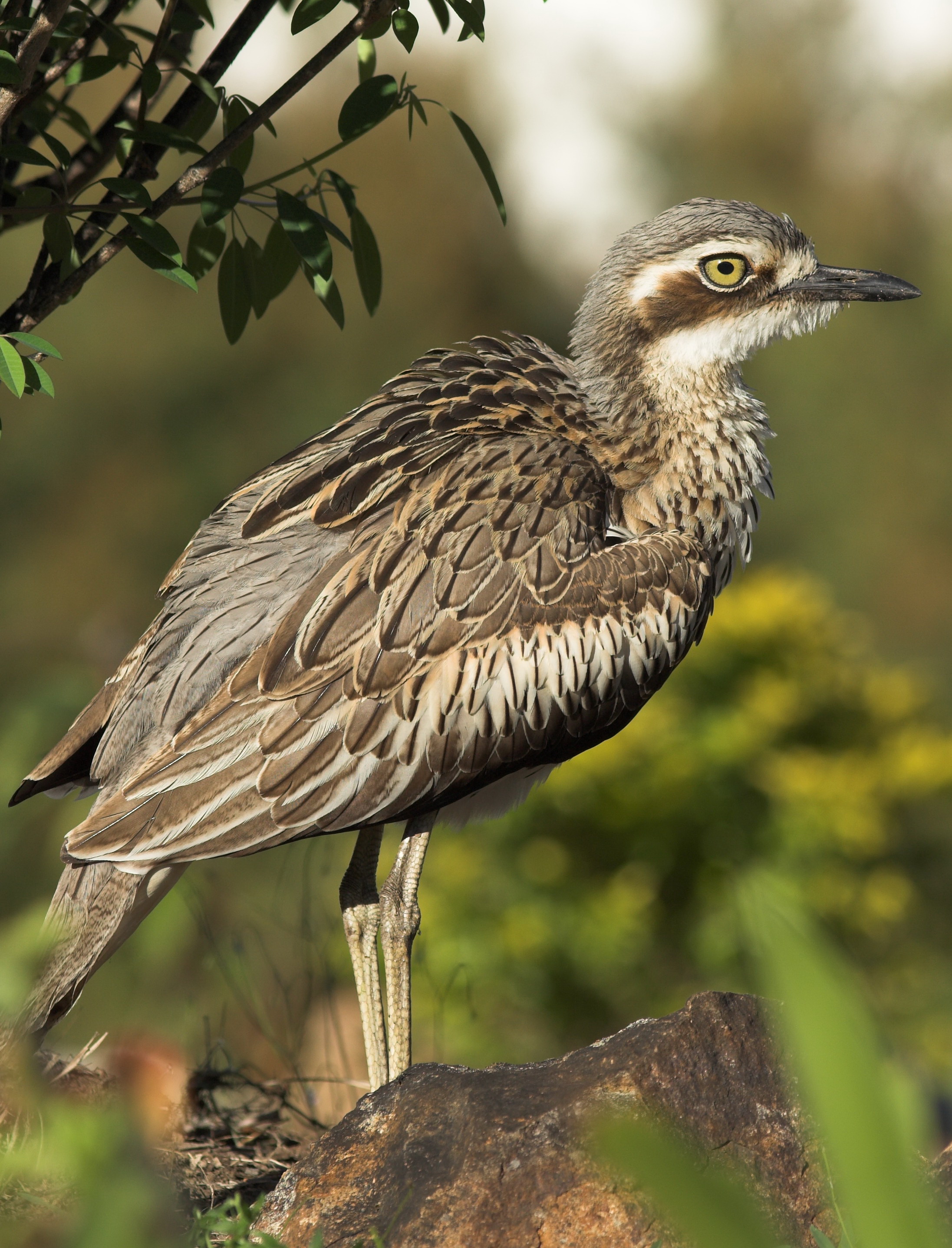- Bush Stone-Curlew
Taxobox
name = Bush Stone-curlew
status = NT | status_system = IUCN3.1

image_caption = Bush Stone-curlew
regnum =Animal ia
phylum = Chordata
classis = Aves
ordo = Charadriiformes
familia =Burhinidae
genus = "Burhinus "
species = "B. grallarius"
binomial = "Burhinus grallarius"
binomial_authority = Latham,1802 The Bush Stone-curlew ("Burhinus grallarius") is a large, ground-dwelling bird endemic toAustralia . Although it looks rather like awader and is related to theoystercatcher s,avocet s andplover s, it is a terrestrial predator filling a similar ecological niche to theroadrunner s of North America.Like most
stone-curlew s, it is mainly nocturnal and specialises in hunting small grassland animals: frogs, spiders, insects, molluscs, crustaceans, snakes, lizards and small mammals are all taken, mostly gleaned or probed from soft soil or rotting wood; also a few seeds or tubers, particularly in drought years. Birds usually forage individually or in pairs over a large home range, particularly on moonlit nights.During the day, Bush Stone-curlews tend to remain inactive, sheltering amongst tall grass or low shrubs and relying on their cryptic plumage to protect them from predators. When disturbed, they freeze motionless, often in odd-looking postures. For visual predators like raptors (and humans), this works well, but it serves little purpose with animals that hunt by scent such as
fox es,dingo es orgoanna s.Despite their ungainly appearance and habit of freezing motionless, they are sure-footed, fast and agile on the ground, and although they seldom fly during daylight hours, they are far from clumsy in the air; flight is rapid and direct on long, broad wings.
When threatened (presumably in the presence of a nest), they may raise their wings wide and high in an impressive threat posture and emit a loud hoarse hissing noise.
Conservation Status
Bush Stone-curlews remain reasonably common in the north of Australia, but have become rare in the more fertile south. Many experts believe that fox predation is a prime factor in their decline, however there are areas where foxes are common yet the Bush Stone-curlew population remains healthy, so the true causes remain uncertain. Large-scale habitat destruction and fragmentation has undoubtedly been important, and may well be the major factor.
Australia
Bush Stone Curlew is not listed as threatened on the
Environment Protection and Biodiversity Conservation Act 1999 .New South Wales
Bush Stone Curlew are considered to be
endangered in New South Wales under theThreatened Species Conservation Act 1995 .Queensland
Bush Stone Curlew is considered common and not threatened.
Victoria
* Bush Stone Curlew are listed as threatened on the Victorian
Flora and Fauna Guarantee Act 1988. [ [http://www.dse.vic.gov.au/DSE/nrenpa.nsf/LinkView/EADA0F1874AF9CF24A2567C1001020A388BBA5581CF9D859CA256BB300271BDB Department of Sustainability and Environment, Victoria] ] Under this Act, an "Action Statement" for the recovery and future management of this species has been prepared. [ [http://www.dse.vic.gov.au/DSE/nrenpa.nsf/LinkView/617768308BCB666E4A25684E00192281E7A24BB36FF60A144A256DEA00244294 Department of Sustainability and Environment, Victoria] ]* On the 2007 advisory list of threatened vertebrate fauna in Victoria, this species is listed as
endangered .cite book | author = Victorian Department of Sustainability and Environment | title = Advisory List of Threatened VertebrateFauna in Victoria - 2007 | publisher = Department of Sustainability and Environment | date = 2007 | location = East Melbourne, Victoria | pages = 15 | url = | id = ISBN 978-1-74208-039-0 ]References
* Database entry includes a brief justification of why this species is near threatened
Wikimedia Foundation. 2010.
